15 Top Causes of Leg Pain
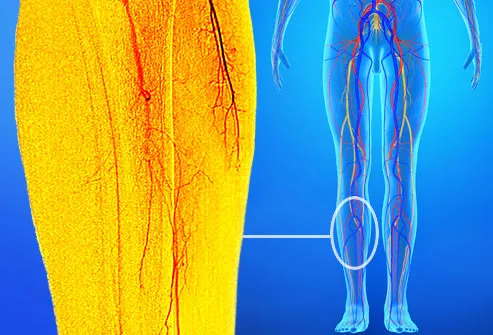
With this condition, your limbs -- typically your legs -- don’t get enough blood. It usually happens because your arteries have narrowed. Your legs may feel weak or numb or cramp when you walk. They might feel cold and be an odd color. Some people can manage PAD with habit changes, like quitting smoking. If that doesn’t work, your doctor might give you medicine to treat the problem or help with pain. But some people need surgery.
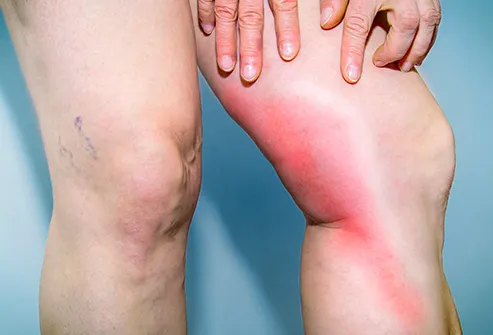
This is a blood clot in a vein, usually in your thigh or lower leg. It doesn’t always cause symptoms, but you might have pain, swelling in your leg, and it might be warm and red. Call your doctor right away if you notice any of these. DVT can lead to a serious condition called a pulmonary embolism -- when the clot breaks off and goes to your lungs. Your doctor can give you medicine to keep clots from forming, growing, or breaking off.
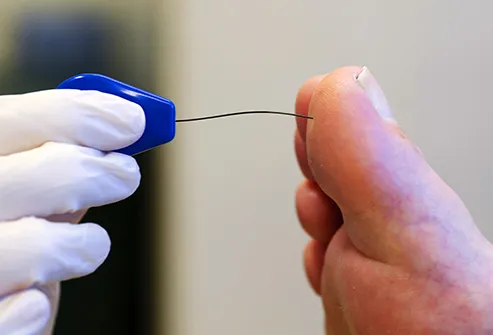
This happens when there’s damage to the nerves in your body that relay messages to and from your brain. The most common cause is diabetes, but other health conditions, medicines, injuries, or infections can cause it. If it affects the nerves in your legs, they might feel prickly or tingly, or they might be numb or weak. Your doctor will treat the condition that’s causing it and give you medicine for pain if you need it.

Electrolytes are minerals like sodium, potassium, and calcium that help your muscles work the way they should. You lose some through sweat when you exercise, and if you lose too much, your legs can cramp or feel weak or numb. It can happen when you get some medical treatments, like chemotherapy, too. Sports drinks with electrolytes -- or water along with foods that have those minerals -- can help. See your doctor if you cramp up often.
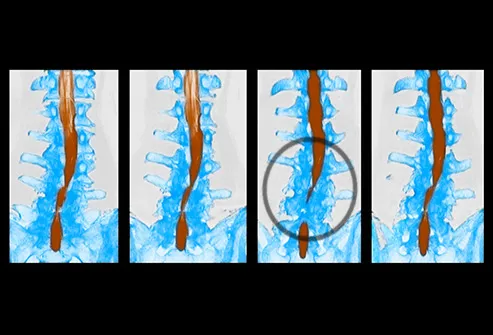
This condition happens when the spaces within the bones in your spine get narrow. That puts pressure on the nerves in the area and can cause pain, tingling, numbness, or weakness in your legs. You also might have trouble with balance. See your doctor right away if you have any of these symptoms. Medication can ease the pain, and physical therapy can help, too. If these don’t work, you might need surgery.
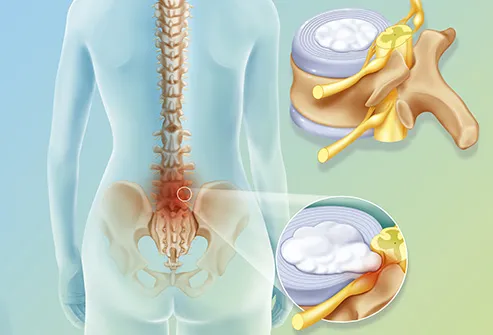
This is leg pain that comes from a pinched nerve in your lower spine. It can range from a bad cramp to a strong shooting pain that makes it hard to stand or even sit. You might feel it because of a slipped or herniated disk, a slipped vertebra, a spasm of your butt muscles, or spinal stenosis. Your doctor might recommend over-the-counter pain meds or physical therapy. If you have a more serious case, you might need surgery.
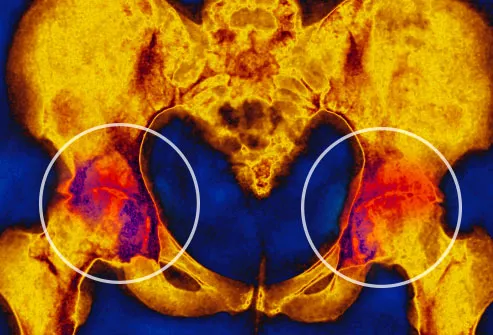
This is a common condition that affects your joints and causes pain, swelling, and stiffness. When it happens in your hips, knees, or ankles, it can be hard to walk or do other everyday activities. There’s no cure, but it can help to exercise and stay at a healthy weight. Heating pads or ice packs on the aching joints can ease pain and swelling. So can over-the-counter pain relievers.

This is when a muscle gets stretched too far. It happens a lot to people who play sports. The pain is intense and starts right away, and the area is tender to the touch. The best treatment is to ice it with cold packs for 20 minutes at a time, several times a day. Outside of that, wrap the area lightly, keep it raised if you can, and rest it. Over-the-counter pain relievers can ease the ache.

This injury happens when the tissue that connects a muscle to a bone, called a ligament, is stretched or torn. Ankle sprains are common. The injured area swells and hurts, and you can’t put weight on it. The best way to treat it is the R.I.C.E. method -- rest, ice (about 20 minutes a few times a day), compression (wrap it in a bandage), and elevation (prop it up). See your doctor so she can take an X-ray and check for broken bones.

This is when a muscle, usually in your calf, suddenly gets tight. It can bring on a sharp pain, and you may feel a hard lump of muscle under your skin. Cramps tend to happen more as you age, and you’re also likely to have them if you’re out in hot weather and don’t drink enough water. Cramps usually go away on their own and aren’t a sign of any health issue, but talk with your doctor if you have them often.
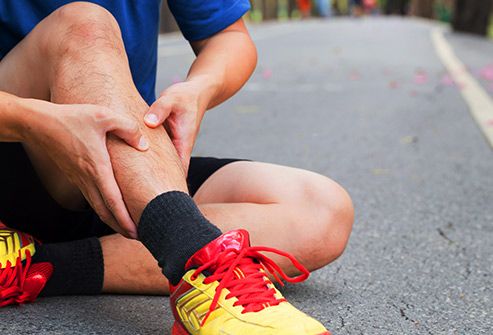
These happen when the muscles and tissues around your shinbone get inflamed, making the inner edge of the bone hurt. They’re common among people who run a lot. Flat feet, rigid arches, or the wrong shoes can lead to them, too. The best treatment is to rest your legs, put cold packs on them for 20 minutes several times a day, and take pain relievers if you need them. But see your doctor so she can make sure it’s nothing more serious.

If pain that feels like shin splints doesn’t get better, you may have a small crack in your shinbone. It happens when the muscles around the bone are overused and don’t cushion the impact of movement the way they should. Rest is the best treatment for a stress fracture, but it can take about 6 to 8 weeks to heal. Make sure it’s healed completely before you start exercising again so you don't make the bone injury worse.

Tendons are the flexible cords that connect muscles to bones. It can hurt a lot if they get inflamed, especially when you move that joint. This is called tendinitis, and it’s a wear-and-tear injury that can affect your hip, knee, or ankle. As with a sprain, the best way to treat it is the R.I.C.E. method. And see your doctor so she can rule out other issues. She also may suggest anti-inflammatory pain meds like ibuprofen or naproxen.
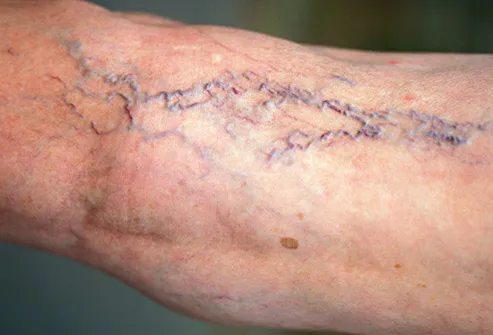
When veins have to work extra hard to get blood back to your heart, they bulge and look twisted, blue, or dark purple. They can make your legs feel heavy, burn, throb, or cramp. You’re more likely to have them as you age, or if you’re overweight, pregnant, or stand or sit for long stretches. Losing weight, exercising, or wearing compression stockings may help. If they don’t, talk with your doctor about other treatment options.
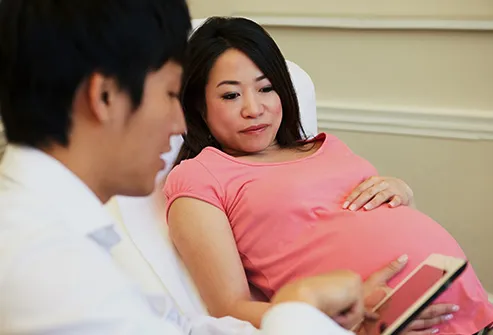
Meralgia paresthetica is a nerve problem that causes painful burning, numbing, or tingling in your upper thigh. Your chances of having it are higher if you’re pregnant, overweight, wear tight clothes, or have surgical scar tissue in your groin area. You can ease the symptoms with over-the-counter medications like acetaminophen or ibuprofen. If the pain lasts more than 2 months, your doctor might recommend stronger prescription medicine.